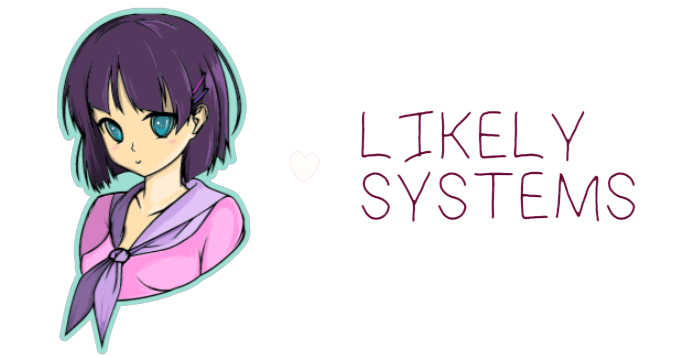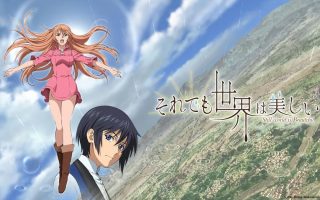Obviously, I have a lot of thoughts as I begin writing this. I’d actually been thinking quite a bit about casting for the Kyoto arc, not necessarily expecting we’d get a reveal on some of it in this finale. I definitely have thoughts in the seiyuu selected (not all that positive ones) but that’s putting the cart before the horse a bit. At least theoretically. The question of what to put in the title line is the first order of business, and while one can make a lot of assumptions, I followed my standard rule – there was no sequel announced, so it’s an “End” post.
The school of thought from the beginning of this reboot has been that doing a reboot of Rurouni Kenshin and not adapting through the Jinchuu arc makes absolutely no sense. And the Kyoto arc is the most beloved of the entire series. In short, stopping here would be a bizarre decision to say the least. Especially with two (actually four) of the principals of the Kyoto arc introduced in this episode. But of if and when we’re getting a continuation there was absolutely no mention. It’s very much worth noting that Jump Festa is this weekend, and it’s entirely possible such an announcement was saved for the RK stage. I’d been saying from the beginning that Rurouni Kenshin might alternate two-cour blocks with Urusei Yatsura, but unless NoitaminA goes back to being an hour there’s no place for it next year.
As much as I’m naturally inclined to pessimism (especially where anime is concerned), even for me it’s hard to imagine this adaptation not continuing. Which makes the question of casting a relevant one. And what was revealed here was the following:
Makoto Furukawa as Makoto Shishio
Daiki Yamashita as Soujirou Seta
Aya Yamane as Misao Makimachi
Yuuichi Nakamura as Seijuro Hiko
I’m not devastated by these choices – there’s are no obvious clunkers here. But I’m not enthusiastic either. With the exception of Yamashita I think they went too young on all the male roles. The 1996 anime set a very high standard with its Kyoto arc casting, but these names play as very “usual suspects”. Admittedly a lot of the big names were off the board – Ohtsuka Akio (in the ’96), Narita Ken (in the awful Kyoto-hen OVA), Seki Toshihiko (Narrator), and Miki Shinichirou (Espilar) among them. But there are still an awful lot of old lions with real gravitas who would, IMO, have been better options. As for Yamashito as Soujirou, it’s another role that was played by a woman recast with a male actor. I do like Yamashita a lot but I’m not convinced on the fit here.
Well, all that is what it is. The finale certainly did a good job setting up what’s to follow, if it ever follows. The Kyoto arc is the spine – and heart – of Rurouni Kenshin and Watsuki’s finest hour as a writer, and it’s no exaggeration to say that the entire Tokyo arc is basically a prologue for the Kyoto arc. As implied by last week’s closing moments, Saitou was indeed a stalking horse – sent by the grandee of the Meiji Revolution, Ookubo Toshimichi. But he certainly did manage to draw out the Battousai once more – so much so that Kenshin had to punch himself in the face to regain his senses.
This is all about Shishio of course. He was the man chosen by the Imperialists to succeed Kenshin as the manslayer, and according to Ookubo the equal of Kenshin in both skill and guile. But he was ambitious and cruel, and when the revolution had succeeded there was no place for a man who knew where all the bodies were buried (he should, he killed most of them) in it. So the government assassinated Shishio – except he survived, and now seems determined to have his revenge against those who done him wrong.
This is the essence of Kenshin’s life – he can run away from his past, but it always catches up with him. And there are two mutually irreconcilable realities at war with Kenshin, who seeks to protect without resorting to killing. What Ookubo is asking of him is no less than the assassination of Shishio, which he’s been singularly unable to manage himself. In short, Kenshin is once again being asked to kill in support of an ideal – but to do so he would have to betray the ideal that he’s built his new life around.
We’ll never know for sure what Ken’s choice would have been (I have my suspicions) of the events of 14 May had never happened. But they did – the cold-blooded murder of Ookubo in broad daylight. For Shishio it’s only too convenient to let a bunch of zaku take credit for it, but for his purposes Kenshin must be made aware of who was really responsible (as Soujirou makes sure he is). This seals the decision for him – he can’t turn his back as Shishio brings chaos to the land and the common people are caught in the middle.
Of all characters in shounen, I don’t think there’s another with as much pure pathos as Himura Kenshin. His ambitions are simple but they could hardly be more insurmountable because of the past which he can never escape. It’s pretty clear in his farewell to Kaoru that he’s developed deep feelings for her in their time together. But that’s the other half of his decision – he knows the danger his presence represents for Kaoru and Yahiko. So he resolves to leave this behind too, just as he tried to leave the Hitokiri behind. But doing so will surely prove no less difficult.
And so the wait begins, with the teasing prospect of arguably shounen’s greatest story arc waiting. For all that anyone might wish to compare this version to the 1996, that series never truly soared until the Kyoto arc, because that’s when the manga becomes truly great. Rose-colored classes can’t hide the fact that the 1996 anime was uneven in the Tokyo arc, with some big hits but some swings-and-misses too. Rurouni Kenshin really begins from here, and one can’t judge this version of the series until it has a chance to show the best it has to offer. I just hope that happens sooner rather than later.
The post Rurouni Kenshin: Meiji Kenkaku Romantan (2023) – 24 (End) and Series Review appeared first on Lost in Anime.



